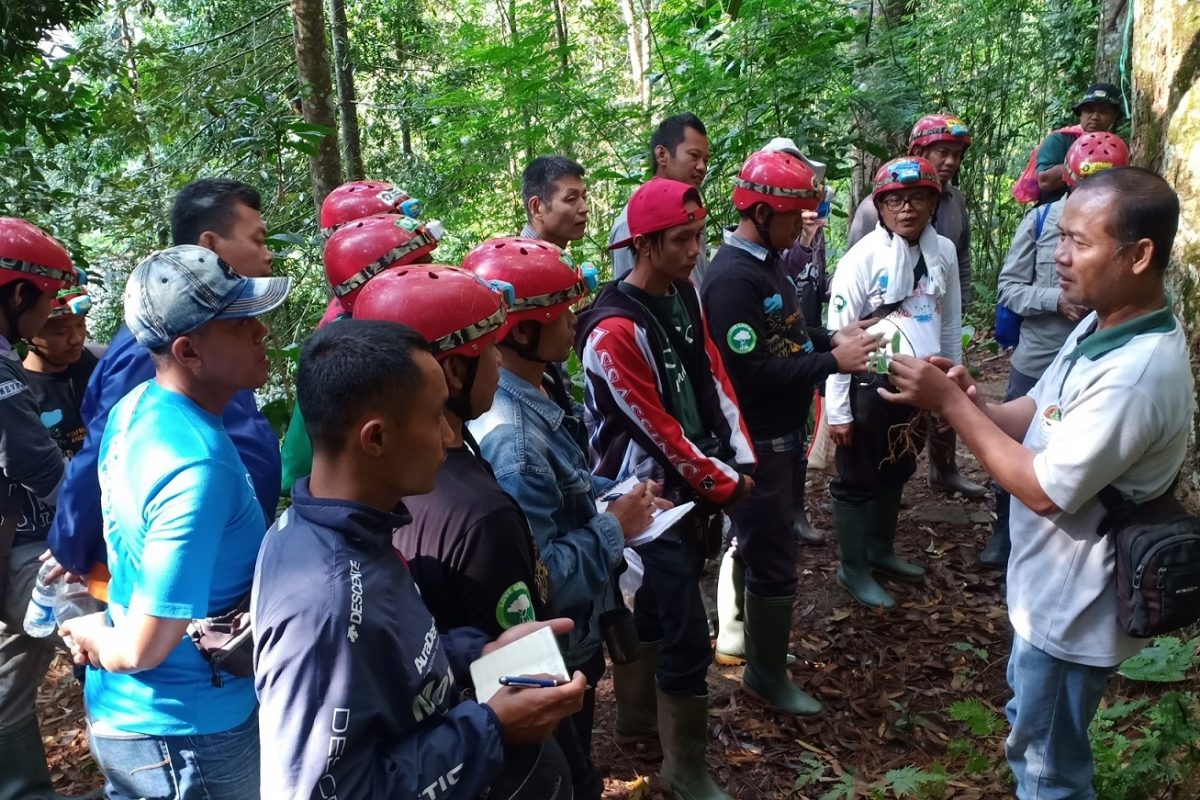
Gunung Walat, Sukabumi – Fieldtrip of The OISCA Indonesia National Coordinator facilitated by the OISCA Training Center, Sukabumi had been held from 7-8 September 2018 in the Gunung Walat University Forest, Sukabumi.
Forests and mountains were united because if there are no forests on the mountain, other ecosystem functions will be disrupted. This made the Japanese NGO, OISCA (Organization for Industrial and Cultural Advancement) and Tokyo Marine Nichido Mangrove Project conducted a comparative study in Gunung Walat University Forest (GWUF).
With the theme of OISCA Mangrove Project National Coordination Meeting, this event was attended by 18 alumni coordinators from OISCA Training Center, Sukabumi who were spread in the mangrove forest areas of Java Island, such as Pamekasan, Pati, Jepara, Demak, Indramayu and Pemalang.
“We have planted more than 3000 ha of mangroves. The coordinators in each region gather to hold meetings once a year to discuss problems in the field. The coordinators report activities for one year so that fellow coordinators can share whether there are problems or not. In addition to the meetings at OISCA Sukabumi, we also bring the coordinators for comparative studies in the environmental field to give them more insights” said Ada Nakagaki, OISCA International Program Officer representative for Indonesia CSR, when met at the location of the activity.
He believed that Gunung Walat was chosen for field trip site due to information obtained from visitors. As a result, it added insight into the function of forest protection at Gunung Walat and participants became able to study non-timber forest products which turned out to be an alternative source of income using a system of empowering forest communities.
“So they (coordinators) can learn about mountain forests about the conversion of empty land into forest does exist. The community’s concern is so high and the results can be seen today. This activity impressed the coordinators very much because they only saw the results from non-wood forest such as resin and pine. I also knew for the first time that the sap from the pine tree could be extracted. I thought it was only from the tree like removing oxygen. So this is not only a new experience for our coordinators, but this is also an important lesson for them to take knowledge from here to be applied in mangrove forests” he added.
Ibu Ada (her nickname) explained that during the comparative study at Gunung Walat, the diversity of forest functions were not only from the wood but also from the diversity of plants in the middle of the forest.
“We were walking in the middle of the forest and saw agroforestry and medicinal plants. That was one of the great lessons, we thank you very much” closed Ibu Ada who had stayed in Indonesia from 2000.
During the activities, the coordinators were also invited to explore the Cipereu Karst cave and this was an extraordinary experience because it was the first time for them to explore a natural cave. Besides that, they were also taught how to make handicrafts such as making key chains from pine resin derivatives and this was also an interesting experience because their knowledge could be applied when they returned to their respective regions.
[pty]
Photo gallery click here
Download news click here
